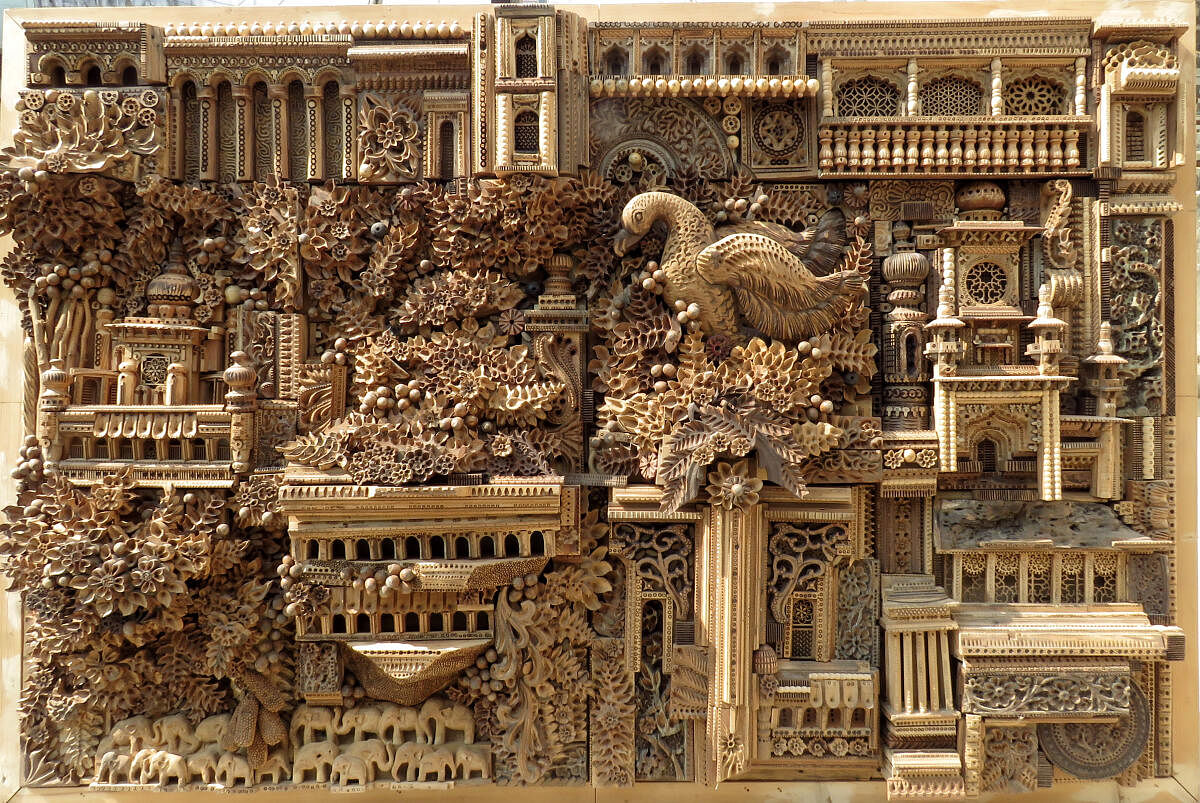

MAG Contemporary, a new vertical launched by the Modern Art Gallery, New Delhi, is currently having its inaugural exhibition ‘Landscapes in Flux’. The exhibition has brought together 12 contemporary artists from different parts of the country, each offering their unique perspective on the interplay between landscapes, architectural designs and the artistic interpretation of these elements. Talking about the exhibition, Ritu Chagti, MAG’s Director and Founder, said, “It has been a journey that has made us conscious not just of the undefeatable muse within the versatility of our culture, but also of the art in architecture that psychologically influences and moulds an artist’s perception of the world.”
Leena Raj R believes that it is the journey of experiences from childhood to the present that defines the marked space we like to call ‘home’. Her work is a homage to the glory of India’s rich architectural history. A seasoned artist, Mayadhar Sahu dabbles with multiple mediums and perspectives. His creations are exquisite extractions of ancient Indian architecture, mainly pertaining to traditional places of worship. “Extensive architectural and archaeological research helps me build artefacts that are in themselves filled with hints of our creative historical evolution and my personal take on architecture itself,” he says.
A master printmaker and lithographer, Tsering Negi is strongly connected with his mountain roots. His two bodies of work in this exhibition offer alternating vantage points to reflect on issues of ecology and climate change. He speaks of the absurdity of his life in Delhi, where he recently moved, with its alarming air pollution levels. “Nature is my muse. It celebrates love where lovebirds chirp, where rivers flow to their traceless destinations, and above them stands the proud high mountains with endless blue skies,” he says.
Building on her sketches of people, faces and their public lives, Keerti Pooja brings to life a world where people are often defined by their belongings. Engaging with the perplexities of city life and the chaos that surrounds us, her repetitive strokes reinforce the internal conflicts of her subjects.
‘Locating’ and ‘In Search of’ are both extensions of her fascination with the ‘bazaar’ and its hawkers, vendors and wanderers. “I see my work as a metaphor of the ways in which we shape our lives — the unlikelihood of completely understanding those around us; living so close to each other, yet truly so far apart,” she elaborates. Diptej Vernekar explores the ever-changing landscape of his coastal hometown, Goa. His collection of artworks in charcoal uses a distinct method of making patterns that seem to grow into intense drawings. “Stories can never be recalled in their entirety, only in fragments that later come together in altered forms. As I try to recompose the stories, these fragments become the catalyst in my abstract charcoal visuals, and I create a new version of reality,” he explains.
Jignesh Panchal’s work is a blend of architectural influences from a childhood spent gazing at the marvels of Indian architecture. Consisting of both vibrancy and depth, his works are built through layers of pigments on paper overlapped with various drawing mediums. “Making an image of an image of an image of what was there, my work is a combination of distortion, testimony and manipulation,” he says.
Bhaskar Boldoi borrows from movies, books, stage plays, music and personal experiences to build an image that is brutally vivid yet a metaphorical depiction of India’s prevalent sociopolitical and religious landscape. Portraying an elusive world of mysticism and dystopia, his compositions are packed with elements of grotesque visuals and dark humour.
A confluence of Indo-Islamic culture can be witnessed in the works of Sachin Pandey who reimagines architectural masterpieces of Hyderabad, Madhya Pradesh and Gujarat, bringing forth a miniaturist’s take on this fusion of elements.
Born and raised in Assam’s Dima Hasao district, Madhurjya Dey’s practice is invested in how personal and collective memories complicate state and regional histories, particularly in India’s northeastern region. Using photographs as inspiration, Dey captures fleeting moments that oscillate between hard facts, personal musings and fiction.
The exhibition is on till July 27.